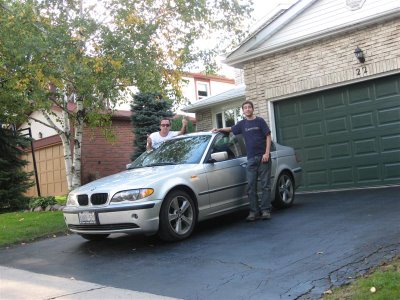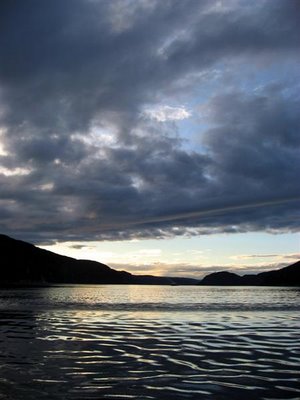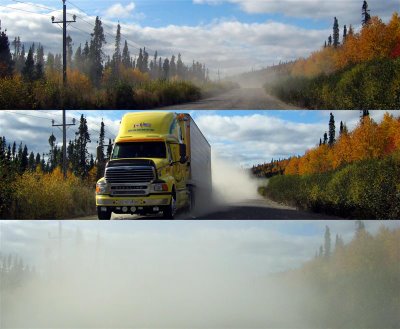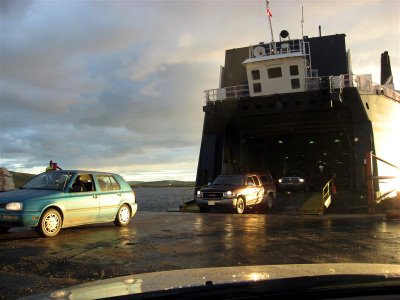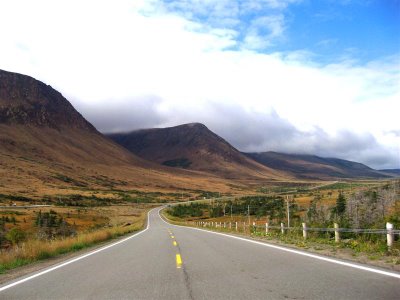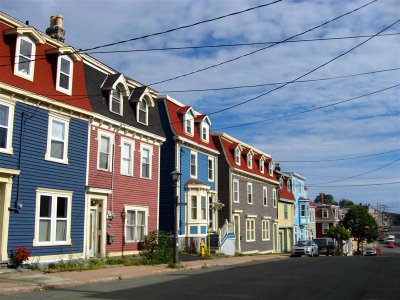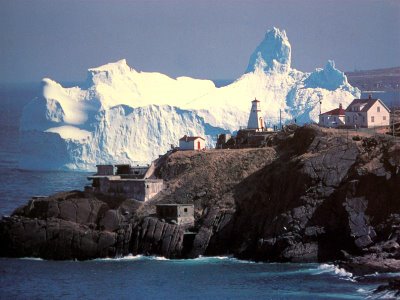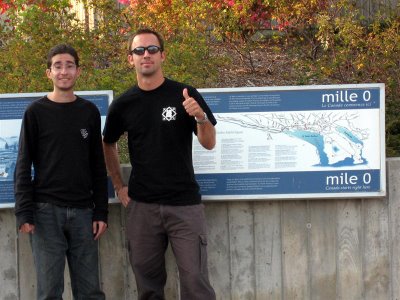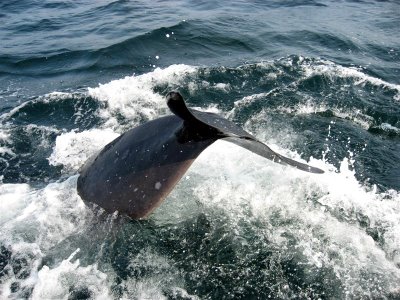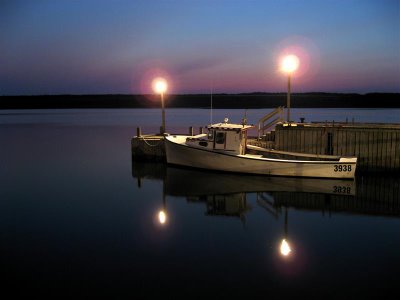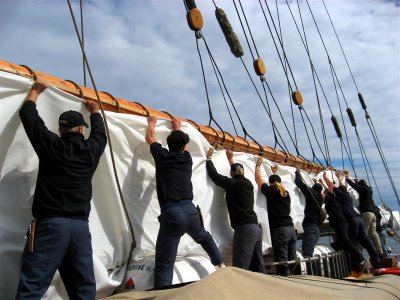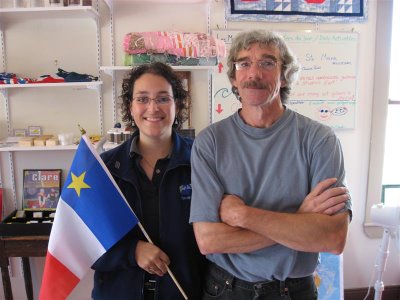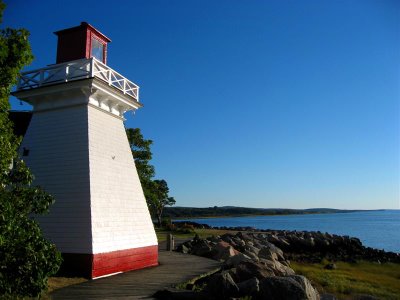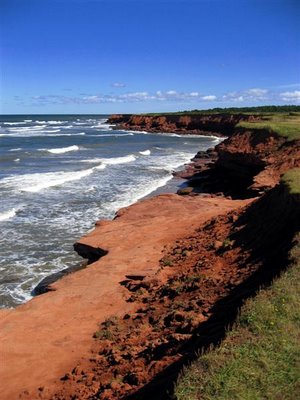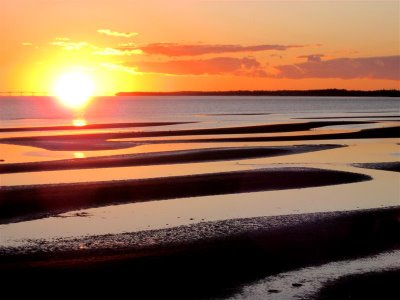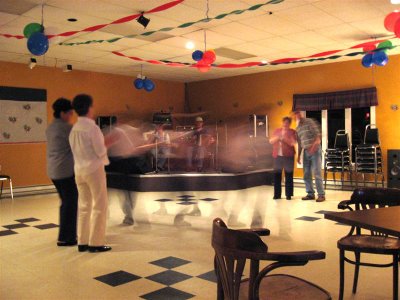 Square-dancin' away: nightlife in West St. Modeste, Labrador
Square-dancin' away: nightlife in West St. Modeste, LabradorDay 18: Flowers Cove ~ L'Anse aux Meadows ~ L'Anse aux Loup (310km)
Andrew and I just got back from a Friday night out in Labrador. Sure it's only 10:30 and sure we didn't close out the joint, but it was fun all the same. More on that in just a bit.
The north peninsula of Newfoundland doesn't look like the most hospitable of places. The land is low, the sea offshore a deep, cold blue dotted with rough whitecaps, and the trees and bushes along the coast are all bent inland to 30 degree angles by the unrelenting wind. For us, these past 24 hours, it seemed all about that wind. Arriving at the B&B last night, a gale was blowing, and our attempts to dry out our wet tent outside nearly led to us being blown into the next lot. Overnight the wind picked up even more, howling like a demon of the dark to the point where the house (and my bed) was shaking. I half expected to wake up and see the legs of the Wicked Witch of Newfieland curled up under our displaced B&B. And then we sit down to breakfast this morning and Maggie, our host, tells us that we should see it "when it really gets blowin.'"
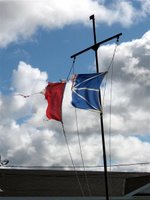
I can’t imagine what the flags look like after when that happens, since already in the community partial flags greatly outnumber whole ones. And just FYI, in Newfoundlandspeak, they don't say "it's windy today." Maggie's elderly aunt came into kitchen this morning and as she was stirring her oatmeal, looked up and commented in her curling Newfoundland accent, "It blows hard." There's your language lesson for the day.
Loaded up on 4 types of homemade jam (one fresh that morning) at breakfast, we sped off towards L'Anse aux Meadows, site of the only established Viking settlement in North America, a National Historic site and the first ever cultural site on the UNESCO World Heritage List. Time was a little tight, as it was 130 km away and we had to get there, see the site, and return to catch the ferry to Labrador by 2:30PM. The coastal drive to the site was spectacular in the bright sunshine, and long, empty stretches of the highway allowed us to test the prowess of the Silver Moose, our new nickname for Andrew's bimmer. She didn't disappoint as we got her up to 161 km/h on one open stretch before fear of an untimely popped tire cartwheeling our car and catapulting us into the St. Lawrence got the best of me and I eased her off. Long story short, we made it there, saw what there was to see (the recreated sod buildings are far more interesting than the grass mound remnants of the originals), and sped back, reaching St. Barbe just in time for the ferry departure.
Ninety minutes later we were in Quebec again. Yep, despite all the signs calling it the 'ferry to Labrador', it actually docks in Blanc Sablon, Quebec, where a big blue fleur-de-leafed sign welcomes you to Quebec...for about 2km until you cross into Labrador. Maybe the ferry gets federal funding this way, by it being inter-provincial, even if it's only just. We stopped at two information offices, only to find both of them closed for the season, and so continued on, in search of a B&B to spend the night. The Labrador coast was rocky and, as we noted with some surprise, devoid of trees. The sweeping views of the indigo ocean were not in short supply, however. After a few stops, one at the oldest burial site in North America (a 12 year-old boy buried about 7500 years ago by an archaic native culture), and the other at the L'Anse Amour lighthouse (the tallest in Atlantic Canada), we arrived in L'Anse au Loup and pulled up to Barney's B&B, our first time having not called ahead for reservations (because cell phone service is almost non-existent up here!)
There we found a whippersnapper of an old bitty, running the joint with friendly smile but an iron tongue. Seventy-four years old but still spry enough to hop on her ATV and buzz off into the hills to hand-pick the monstrous bowl of partridgeberries that I was looking at when she answered the door with a tongue-in-cheek, "Gitcher eyes off my berries!" She had a lot to say and was constantly busy-bodying around, but had us well settled in and looked after in no time. We also happened to find the same Ottawa couple who was in our B&B last night in Newfoundland. I guess there are only so many options. This was lucky though, since they were the ones to give us the tip on tonight's restaurant and local live entertainment.
We found the Oceanview Restaurant in a beautiful log building in neighbouring West St. Modeste, a town so small that across the street, one building served as the Post Office, Youth Centre, Fire Department, Seniors Centre, Regional Development Centre, and at least three other things. Our server told us of the cheap and delicious pork chop special on tonight, but as soon as we opened the menu and saw that caribou steaks were on offer, the deal was done. Not cheap, at $27.95, but were they ever delicious. Just the subtlest hint of tasty, gamy zing and a finer flesh let you know that it wasn't beef, and it was seasoned just right by the chef in the kitchen.
With dinner done, it was time for entertainment. Fortunately, we didn't have to go far, for in the same building there was a square dance and Mummers dance being held to kick off the town's annual Partridge Berry Festival, running all this weekend and which unfortunately we are going to miss by having to head out tomorrow morning. While we sat and chatted with the Ottawa couple, a few of the mummers came out, dressed in wacky costumes and moved about the room. The idea is that they do a dance and you're supposed to guess who it just by their movements, since everyone knows everyone in these towns. It didn't amount to quite as much as we'd thought, but it was interesting all the same. And then the accordian player made his appearance on stage and the square dancing began. It had been a while since we'd last square danced, so we stayed on the sidelines, watching festivities and taking in the small-town Labrador culture.
At 10PM, the fun just too much to take, we made our way out to the parking lot, knowing that we were unmistakeably in Labrador. And turning on the engine, the first words we heard on the local CBC channel drifted out of the radio, "And now, I'd like to talk a little bit about salting fish..."
